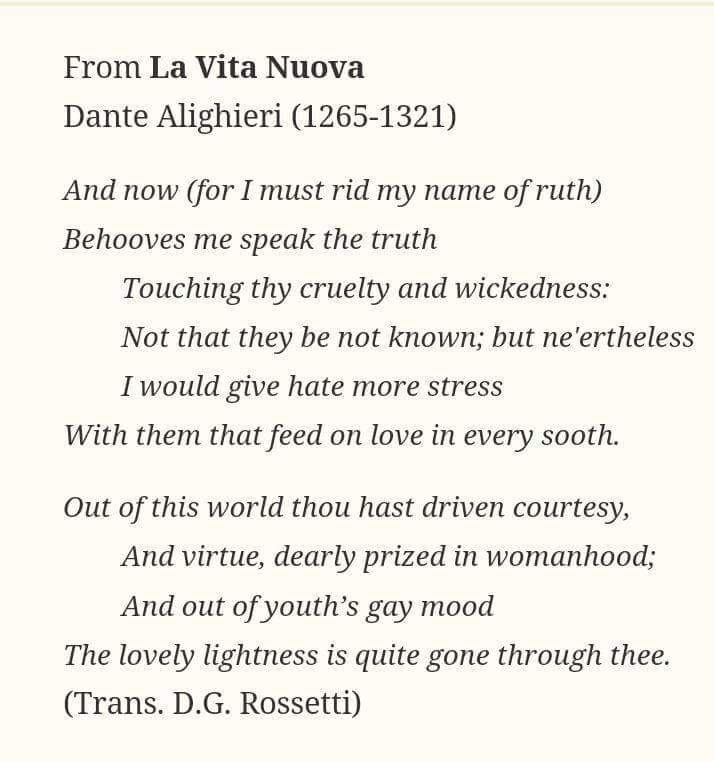

In accordance with the principle (which supposedly applies to all rhymed poetry but often doesn't), a change from one rhyme group to another signifies a change in subject matter. The point here is that the poem is divided into two sections (octave and sestet) by the two differing rhyme groups. In strict practice, the one thing that is to be avoided in the sestet is ending with a couplet (dd or ee), as this was never permitted in Italy, and Petrarch himself (supposedly) never used a couplet ending in actual practice, sestets are sometimes ended with couplets (Sidney's "Sonnet LXXI given below is an example of such a terminal couplet in an Italian sonnet).

The set of first eight (8) lines is called the octave and rhymes: a b b a a b b a The remaining set of six (6) lines is called the sestet and can have either two or three rhyming sounds, arranged in a variety of ways: c d c d c d c d d c d c c d e c d e c d e c e d c d c e d c The exact pattern of sestet rhymes (unlike the octave pattern) is flexible. The Italian/Petrarchan sonnet is divided into two sections by two different groups of rhyming sounds. The Italian (or Petrarchan) Sonnet: The basic meter of all sonnets in English is iambic pentameter (ten syllables per line, unstressed followed by stressed)), although there have been a few tetrameter (four syllables, unstressed followed by stressed) and even hexameter (six syllables, unstressed followed by stressed) sonnets, as well. There are, of course, other types of sonnets,as well, but I'll stick for now to just the basic three (Italian, Spenserian, English), with a brief look at some non-standard sonnets. Each of the three major types of sonnets accomplishes this in a somewhat different way. Basically, in a sonnet, you show two related but differing things to the reader in order to communicate something about them.

A sonnet is fundamentally a dialectical construct which allows the poet to examine the nature and ramifications of two usually contrastive ideas,emotions, states of mind, beliefs, actions, events, images, etc., by juxtaposing the two against each other, and possibly resolving or just revealing the tensions created and operative between the two. For ease of reading, we'll post each separately. Courtesy, Nelson Miller from the Cayuse Press and Sonnet Central. SONNET - BASIC SONNET FORMS - PETRARCHAN, SPENSERIAN, SHAKESPEAREAN Here is a good explanation of the three basic sonnet forms: Petrarchan (Italian), Spenserian, Shakespearean (English), as well as variant sonnet forms.


 0 kommentar(er)
0 kommentar(er)
